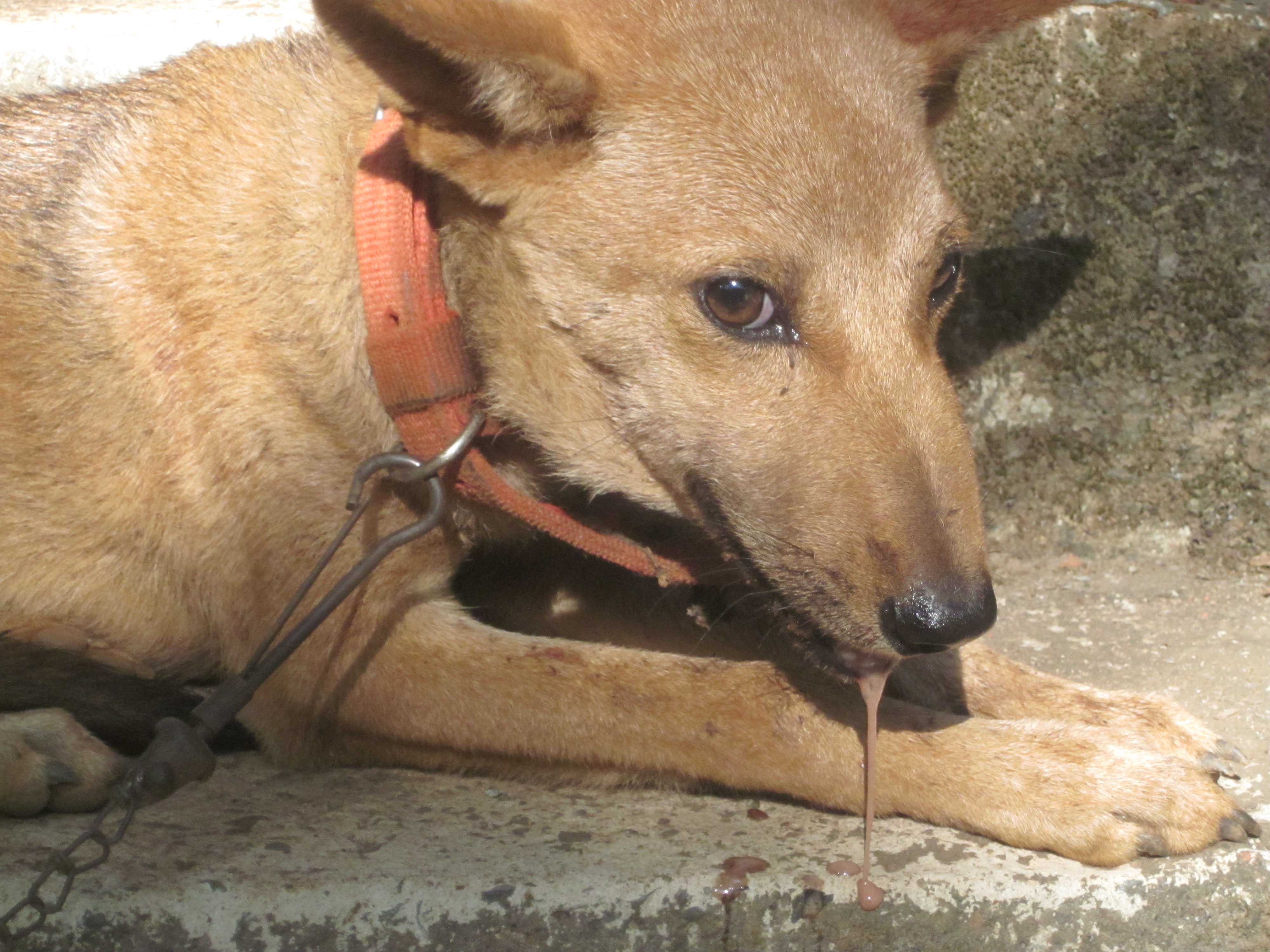
Key facts
The virus
- Rabies is a bullet-shaped lyssavirus.
- It is so small, you could fit 5550 virus particles into a single raindrop.
- It can affect any mammal, including humans, and uses its hosts' nervous system to travel from the body to the brain.
- Once it has reached the brain, it replicates, causing inflammation and large amount of virus can now be found in the saliva.
- The host is now infectious.

Key facts
The symptoms
- Once rabies symptoms are present, it is 100% fatal.
- The virus is very unstable outside of the host, so to pass it onto new victims, the virus changes the way its host behaves.
- There are 2 forms of rabies symptoms:
- 80% display the ‘furious' form where signs can include: Restlessness, sensitivity to sound and movement; wandering aimlessly into new areas; excessive reactions to people and animals; aggression; indiscriminate biting and saliva may drip from the mouth.
- The other form is ‘dumb' where animals become lethargic, potentially paralysed and show other non-specific signs of illness.

The problem
- Rabies is a neglected tropical disease that affects the poorest and most marginal communities.
- Known as the world's deadliest disease, rabies has a 100% fatality rate once symptoms develop.
- It kills an estimated 59,000 people a year, the majority of whom are children.
- 95% of all human cases are in Asia and Africa.
- 99% of all human rabies cases are transmitted through dog bites.
- Globally, Rabies is predicted to cost $8.6 billion USD every year

Dogs
- 99% of human rabies cases are a consequence of dog bites.
- This causes dogs to be feared amongst many communities resulting in persecution and culling by government organisations through a misunderstanding that this will eliminate rabies.
- Creating a safe and stable dog population through the combination of vaccination and sterilisation is the best way to reduce canine and human rabies.

Vaccination
- Rabies is 100% vaccination preventable
- We know that infected dog bites are the main cause of rabies in people and that killing dogs does not stop the disease.
- Studies indicate that mass canine vaccination programmes are the most effective measure for controlling rabies, and that vaccinating 70% of the dogs in an area where rabies is prevalent is necessary to control the disease in both humans and dogs.
- Some places in the world have successfully used mass vaccination programmes to become canine rabies-free for over 10 years - examples include Latin America and Japan.
- We have already seen a reduction in human rabies deaths in our project sites and aim to achieve the same across the globe.

Zero human deaths from dog-mediated rabies by 2030!
In 2015 a global conference of Rabies stakeholders, including WHO, OIE and GARC, constructed a framework for the elimination of human deaths from dog-mediated rabies by 2030.
Rabies is 100% vaccine-preventable, we can and will eliminate Rabies.









